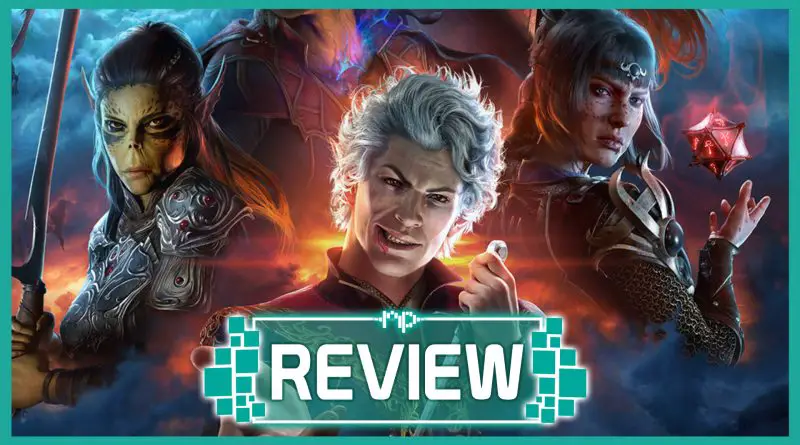Baldur’s Gate 3 Review – The Best Thing to Happen to Those Without Friends
-
Title: Baldur's Gate 3
Developer: Larian Studios
Release Date: August 3, 2023
-
Reviewed On: PC
Publisher: Larian Studios
Genre: RPG
There’s something special about Tabletop RPGs, whether it’s the camaraderie between others at the table or simply the ability to do anything imaginable. For years, we have been told that an authentic video game format recreation would be unattainable, that it would be too difficult and resource-intensive to account for every possible option a player could take. However, Larian Studios has decided to attempt this monumental task with Baldur’s Gate 3.
The first thing most players will see upon boot up of the game is the selection of which difficulty option they would like to play on, between Story-Focused, Balanced, and Tactician. I had selected Balanced as I thought this would be the experience I was most accustomed to from my years of playing with a group.
At one point, I selected the story-focused mode to see the difference, and the biggest one players will notice is that stats will be boosted for party members and reduced for enemies. If a character is knocked down, they won’t be in danger of death as a normal D&D character would. This mode doesn’t do quite as much as I had assumed it would.
Some encounters still retained their difficulty from balanced difficulty. Still, the evened-out stat distribution levels the playing field enough that I never had to retry more than a single time for any combat encounter, though I ended up returning to Balanced after a short while. However, the settings that took me the longest to decide upon were what my character would look like and what they would excel in.
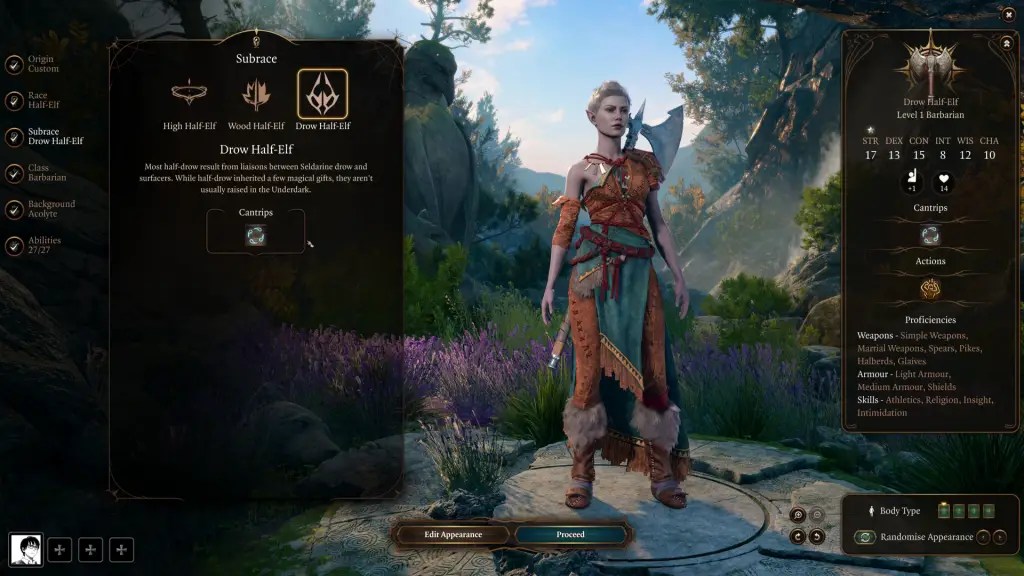
Players will be able to select first between a small variety of common races that litter the world of Dungeons & Dragons, with Dwarves, Elves, Humans, and Half-Elves being the most common races. Players can opt for a little more variety by choosing Drow (also commonly known as dark elves), Gnomes, Halflings, Tieflings (the descendants of humans and demons, Orcs, and Githyanki.
Besides the choice of ancestry, the character creator lets players create themselves, albeit in a limited fashion. For example, players cannot customize height or weight for their character. Instead, there are four body types split between male and female, with one option being taller and muscular and the other short and light.
These very basic customization features not being there is a bit of a letdown, as much of a character’s identity can be in their height and weight. In fact, the character sheet for Dungeons & Dragons Fifth Edition specifically has a spot for height and weight. So, missing them here is disappointing, especially when players can more deeply customize certain other parts of their character.
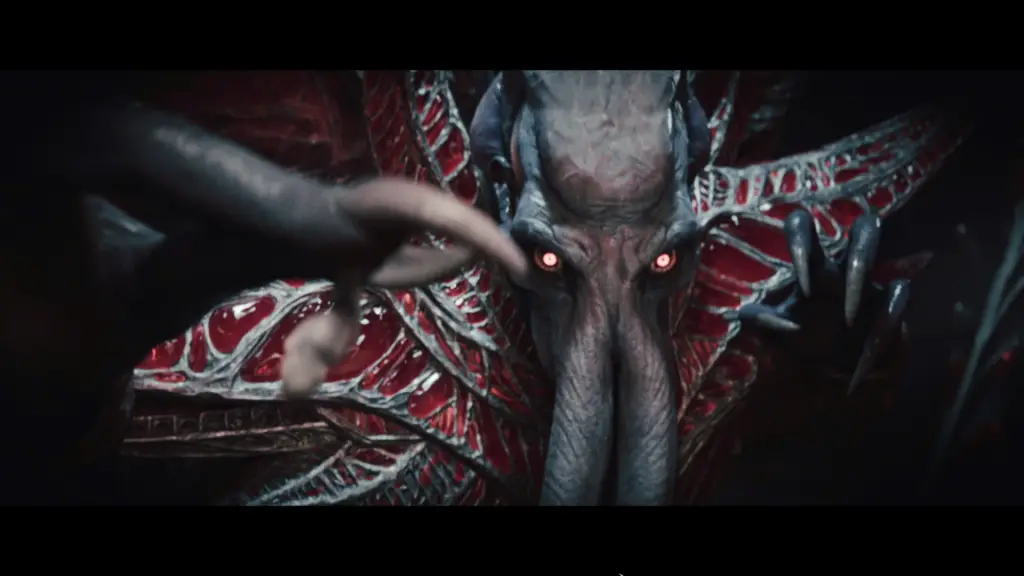
The story begins upon a ship made not of wood and steel but of flesh and bone, a Mind Flayer’s vessel used to travel dimensions. You have recently been abducted and forced to harbor a “Tadpole” in your head, a ticking time bomb that could mark your end, transforming you into one of your own captors. After a well-timed attack on the vessel, you and the other infected make a break for it and must find a way to rid yourself of your unwelcome guests before the bomb explodes.
This plot hook was enough to get me interested and to dream of the possibilities such an adventure could entail. After all, the Forgotten Realms, the setting of Baldur’s Gate, is not known to be a very inclusive place for most races, let alone a party of adventurers that could explode into a brain-devouring monster at any moment.
Larian Studios plays into this premise in a way that a DM would, allowing players to tap into the innate powers that could be granted from the Tadpole inside your head to refuse aid from untrustworthy sources. This freedom goes even further beyond as it felt like my choices mattered to the narrative, whether I – for example – decided to save a random village in need or side with the baby-eating goblins trying to lay waste to it. I was allowed to make these choices with great applause from those I assisted.
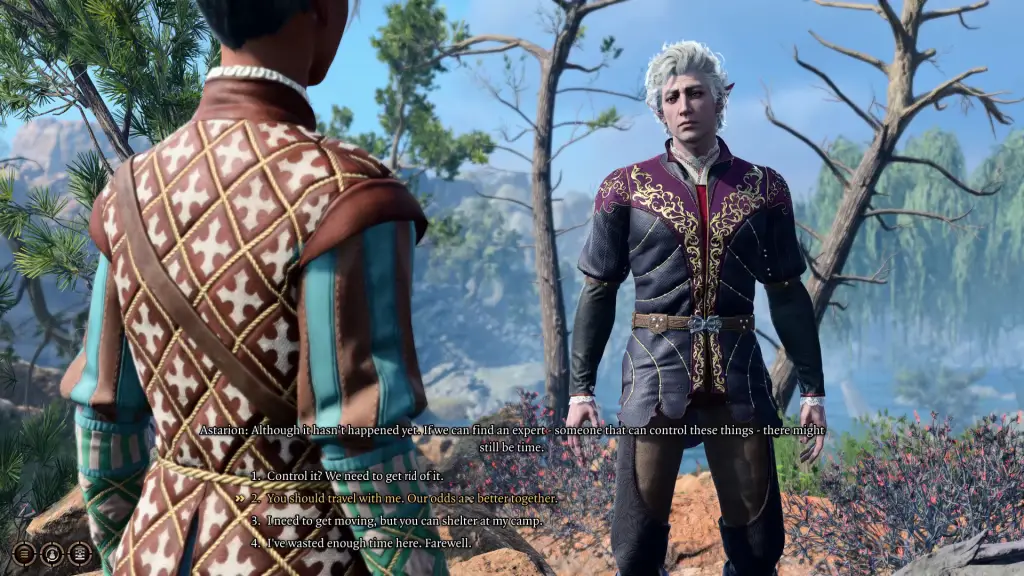
I was an adventurer traveling across the land to either rid myself of the Tadpole or indulge in its power to bend others to my will. Even a spell like Detect Thoughts could be used to probe the minds of my party members and others to attempt to manipulate social encounters.
The immersion was so great that, at times, I felt heavily ejected from the narrative as I would speak to a party member to just cycle through the same responses I had seen hours ago. This sudden return to reality shocked me for the first time after I had successfully lured a goblin leader from her cronies to kill her in silence and leave her body before anybody had a chance to know, with my party members largely having nothing to say about it.
This problem is interesting as this is something that would be seen as usual in other games. However, with the number of considerations for each possible state of the world, it would have been simple to have party members say something along the lines of “I don’t want to talk about this” or change the dialogue slightly based on events that have recently transpired. Party events like this feel like they should be happening more, especially when, during the events, they seem to be more keyed into the situation.
Despite that minor flaw, the character writing is fantastic. Even what appears to be an unimportant gesture from one of my party members eventually leads to a hook to further the relationship between my character and Shadowheart, the half-elf Cleric. Even a farfetched rumor about a demon killing a town, which I initially discounted, eventually led me to find Karlach, the infernal demon hunter looking to be free from her captors in the Nine Hells.
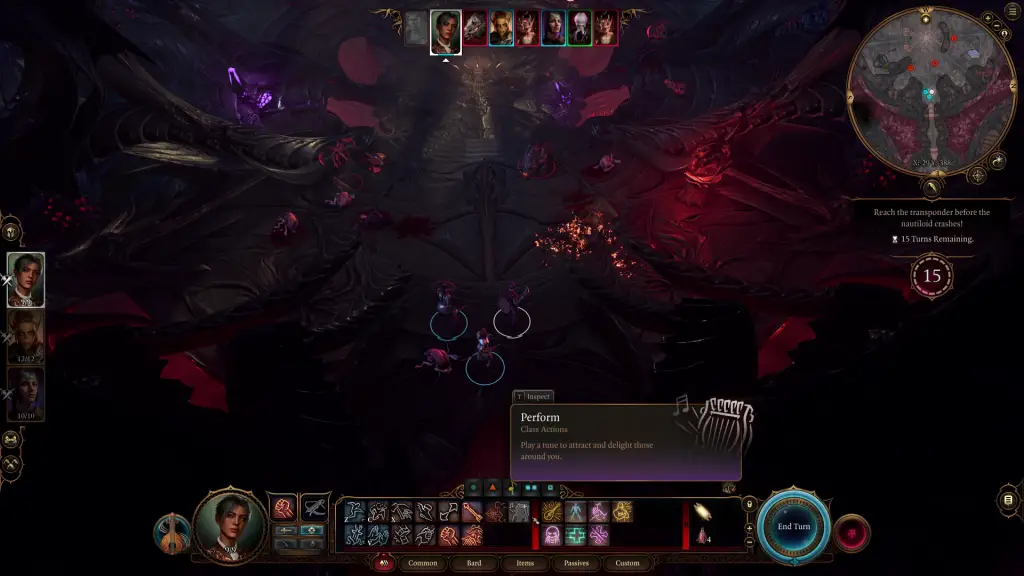
Each character feels fully fleshed out; I can’t name a bad character, even the characters I don’t like. Lae’zul, the githyanki warrior specializing in Mind Flayer extermination, rubs me the wrong way. She is constantly aggressive in combat and in her interactions, actively telling my character that we denied paradise when not accepting to sleep with her for the night.
However, as a player, I understand her need to rid herself of the parasite and live up to the standards of her warrior culture. I may not like her, but her personality shines through effortlessly. Even Astarion, whom I would consider the most amoral out of the party, has a sarcastic approach to his interactions that I honestly enjoy despite his general pursuit being to kill anything that moves as fast as possible.
These traits make it simple to remember each character and what I liked or didn’t like about them, but also understand them. They are all compelling and are the major strength of Baldur’s Gate and Dungeons & Dragons in general. The characters are among the many reasons I easily and happily spent over thirteen hours exploring everything on the map for the game’s first act alone. I wanted to make sure I hit every story hook, completed every side quest I could, meet every character, and see every possible interaction I could have. I wanted to explore everything, despite having somewhat more mixed feelings about the game’s combat.
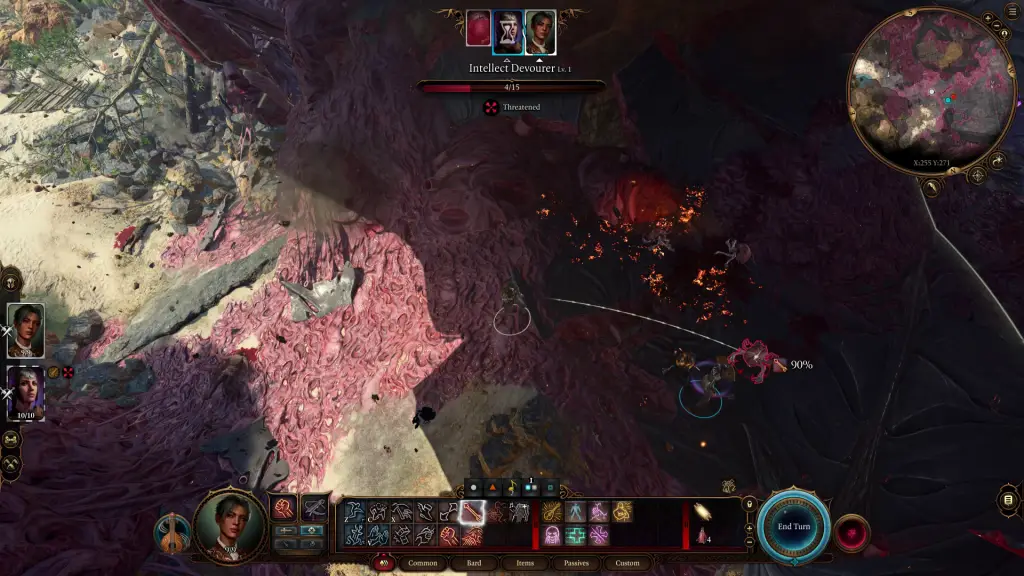
The combat in Baldur’s Gate 3 is a strategy RPG where each character takes turns to attack using dice rolls to determine whether or not a strike lands. Players have resources that fuel spells and other abilities called spell slots, while actions during a turn are relegated to Full Actions, Bonus Actions, and movement. Actions are primarily used for attacks, and most bonus actions are for smaller abilities or to activate items. Obviously, movement determines how far the character can move in a single turn—all standard fare for those who have played any sort of Tabletop RPG before.
So, if you have a background in the Fifth Edition of Dungeons & Dragons, commonly shortened to 5e, then Baldur’s Gate 3 will feel very familiar but needlessly difficult at times. For instance, many Gnolls surround a cave that players can find early on. These creatures are listed as fourth-level and should, in theory, be pretty easy to defeat with a party of four adventurers of similar supposed strength.
So, I walked right into the horde and got ready to fight, expecting to save my resources until I really needed to use them between encounters. To my shame, this approach quickly made me wipe multiple times in this encounter.
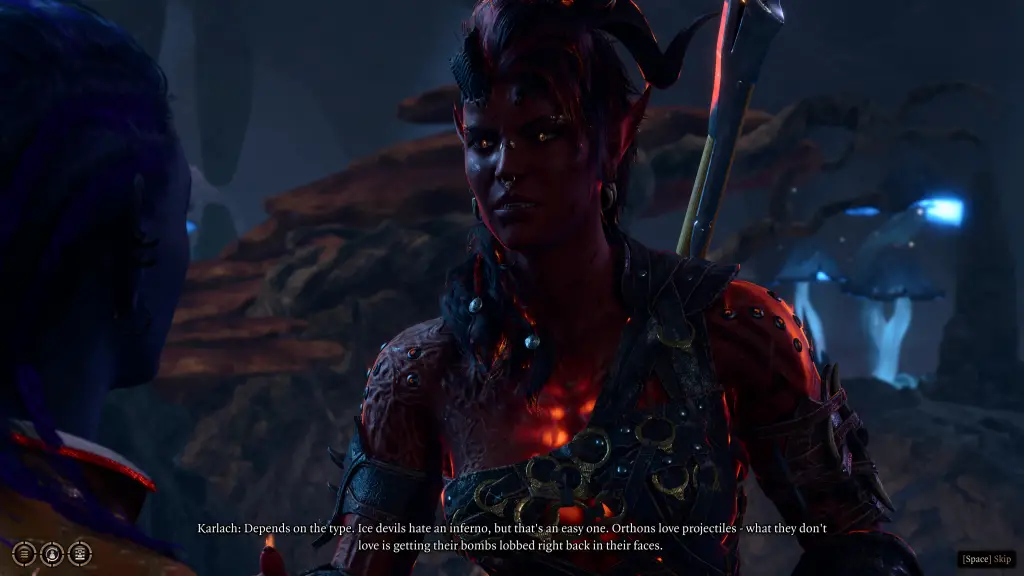
I thought I was terrible at the game while going through this encounter multiple times, pulling my hair out over it until I noticed a few things. First, this isn’t 5e in the way most people will experience when sitting down with a group to play. Larian Studios essentially combined the environment-heavy mechanics of Divinity: Original Sin 2 with D&D5e to take advantage of the ability of a computer-run video game to account for wild changes in battlefield conditions.
The result is a hybrid that isn’t “true” 5e, and I noticed that I was hindering myself needlessly due to my previous experience with the rules. I was entering into encounters expecting to more or less walk away using only a single spell slot and maybe a few potions. Instead, even basic enemies had multi-hit attacks and conditions that don’t exist in the Core Rulebook, which has much more of a just-the-basics approach.
I noticed that I needed to use the environment against my enemies and use stealth to ensure my party was positioned in a way that limited enemies from attacking us. So, I sent Gale the wizard forward, ready to launch a few spells as the rest of my party laid down traps around the area.
I easily won this encounter with a lot of prep and positioning that normal Dungeons & Dragons rules don’t account for. This can be frustrating in many ways as we are still not getting an authentic tabletop experience in video game format. The system abuses mechanics for multiple-hit strikes, area-wide attacks, and environmental hazards while assuming that the player will similarly abuse the system.
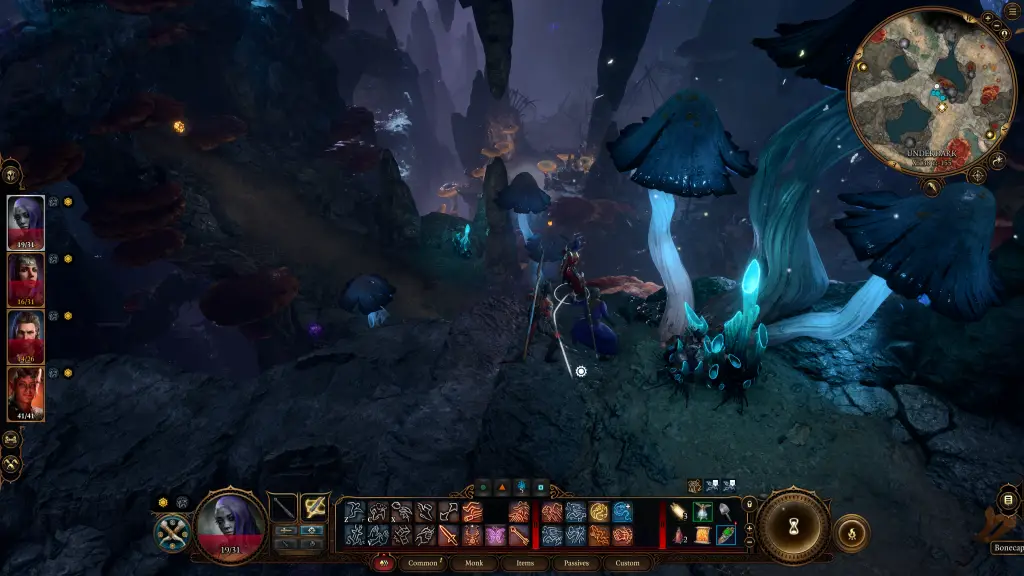
After speaking to a friend, we agreed that it felt like the computer was going overboard in every encounter that we participated in. This was because I assumed I was playing in a format that was never on the table. Once I noticed this, I started planning around saving before a fight and reloading when it was clear that I could not win. This simple change and all the preparation I would now do before each encounter made me enjoy the game much more.
This also shows that its complexity and encounter design is much different than most would expect booting up the game. This is a problem because the game never tells you about some of these systems. For example, the Karmic Dice feature is never spoken about in-game. This setting is supposed to bend the rolls for the player; Larian themselves call it a “kind DM.”
This is common in Dungeons and Dragons as the Dungeon Master is not the enemy of the players, instead trying to craft a good story together with them. So, fudging rolls here and there is a common, if unspoken, practice. However, with this setting on, I noticed that enemies were rarely missing, and with it turned off, the balance seemed to be fairer to me.
This setting is turned on by default, and if the player isn’t looking in depth into the settings, this could easily be missed, especially when dice rolls are a crucial part of the game. I feel that the Karmic Dice only hindered fights and gave an advantage to enemies who already felt like they had enough benefits. With the setting turned off, combat is fast and responsive, allowing players to end encounters unexpectedly. Whether they’re leading an enemy into an ambush with stealth or casting a spell pulling all of their enemies into a hole, killing them instantly, a player who is resourceful and knows what to look for will excel in the game, and those who see combat as a less essential part of the tabletop experience will find that the game will not go easy on them.
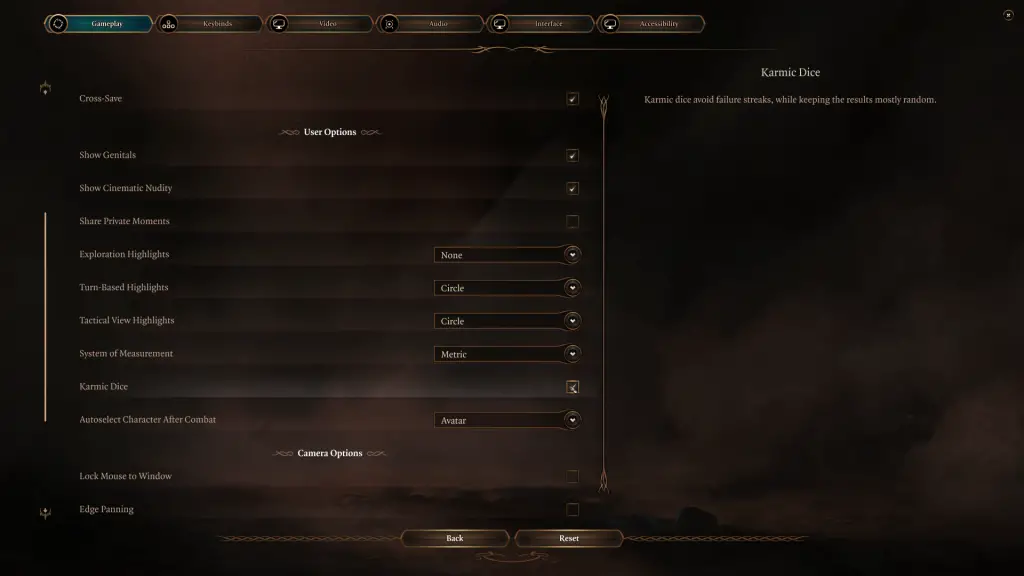
I could easily keep talking about this game, from the romance scenes that honestly had a lot of heart put into them or about various small encounters that I had just roaming around the map. Baldur’s Gate 3 may not be a one-to-one recreation of a system that many of us know, but that doesn’t hold it back in any form. Instead, the spirit of Dungeons & Dragons is inside the very fiber of Baldur’s Gate 3; it can sometimes be silly and outlandish. However, there is a lot to love here, and there aren’t many words that could really convey how much I love this game and glad that while the battle system may not be what I expected, once I adjusted myself to it, it gave me almost everything else I could want out of a game.
This post may contain Amazon affiliate links. As an Amazon Associate Noisy Pixel earns from qualifying purchases.
